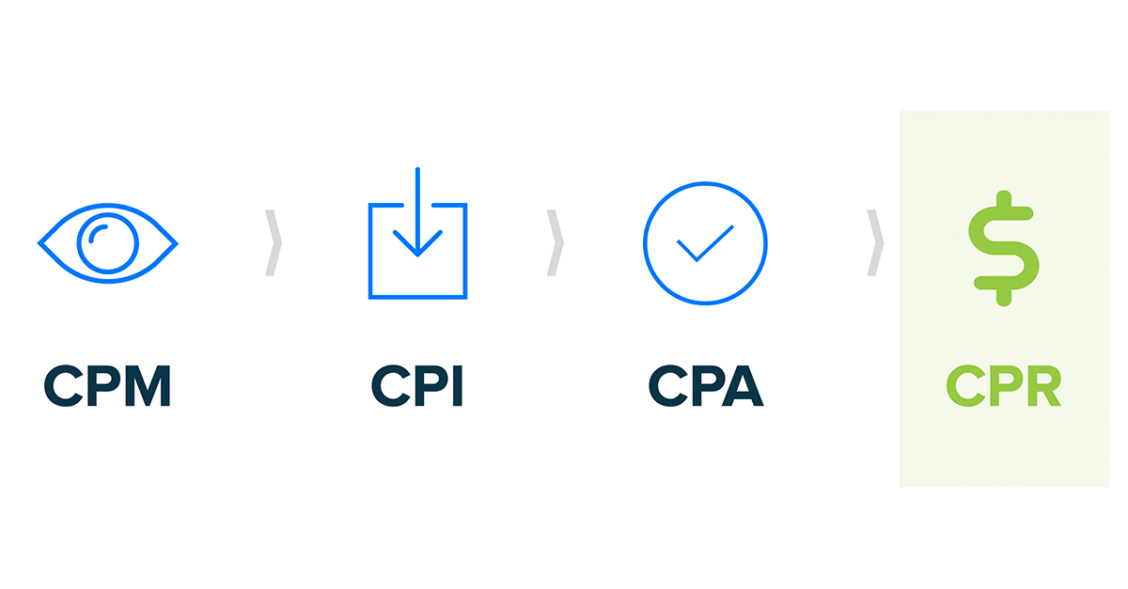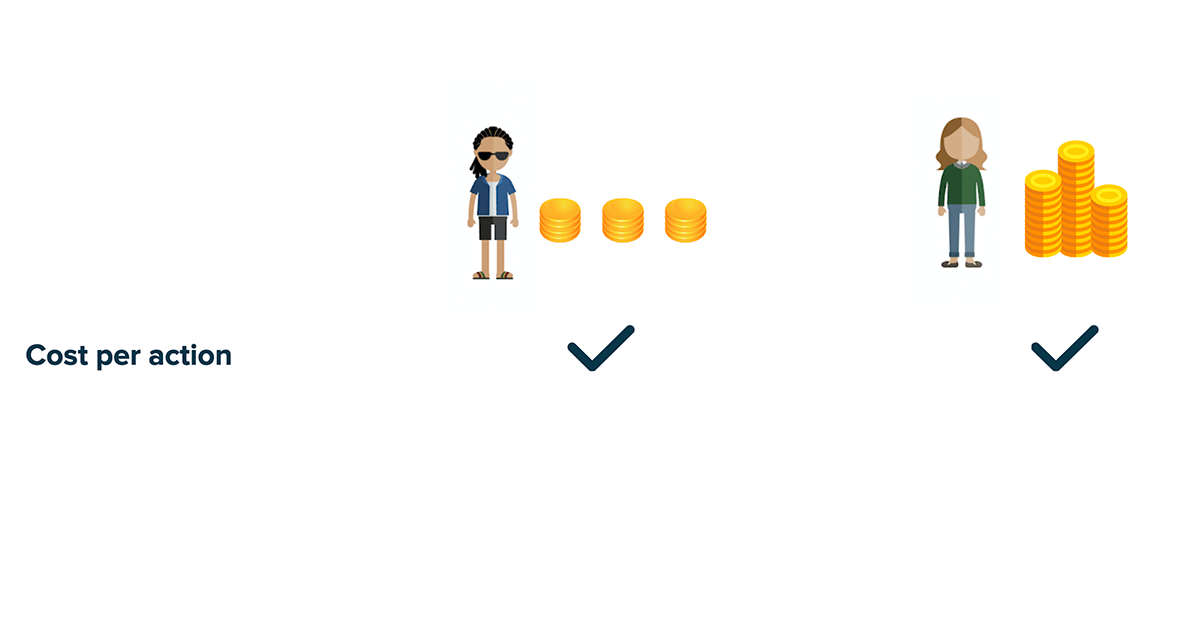
Cost Per Revenue: Optimize for Your User LTV Goals
The success of a mobile app advertising campaign can be narrowed down to a single objective – the total value a user brought to your app. The user lifetime value (LTV) metric is important because it tells you how much you should be paying for a user. For example if your user acquisition cost is $10 and your user LTV is $15, you know you’re ROI positive. On the other hand, if your user acquisition cost exceeds your user LTV, you’ll want to adjust your campaign accordingly.
However optimizing for user LTV is not easy. Marketers have to make educated guesses on the value of each impression, install, and action to predict user LTV. For example, a marketer may assign the following values to back out to a user value of $30:
- Impression – $2?
- Install – $5?
- Action (e.g. purchase) – $10?
- User LTV – $30
This approach is flawed since not every action is equal. A user who made a $10 purchase is worth more than a user who made a $2 purchase. Consequently, marketers are in the dark when it comes to optimizing for user LTV goals, not knowing how to quantify up-funnel events.
Is there a better substitute to educated guess work? At Liftoff, we say yes.
Today we’re excited to announce Cost Per Revenue, a unique model that optimizes for your user LTV goals.
How Cost Per Revenue works
Cost Per Revenue is exactly what it sounds like – pay for revenue. Unlike CPA which optimizes for a single event, Cost Per Revenue (CPR) is event agnostic and optimizes for users who generate the most revenue. This can be a purchase, a subscription and/or an ad revenue event.
For example, let’s say we have 2 users. User 1 takes 3 actions and makes $1 purchase each. User 2 takes 1 action and makes a $10 purchase.
- From a CPA perspective, both users are equally valuable since both user made a purchase
- From a virtual events perspective (# of actions), user 1 is more valuable because they made more repeat purchases
- From a Cost Per Revenue perspective, user 2 is more valuable because they generated more revenue

Cost Per Revenue is unique in that it goes a step deeper than CPA by quantifying the actions of a user, enabling us to optimize for revenue. Customers transitioning from CPA to the Cost Per Revenue models have seen on average a 36% lift in ROAS
What does this mean for you?
Cost Per Revenue takes the guesswork out of optimizing for user LTV goals by finding the most valuable users for your app. Cost Per Revenue is easy to set up by passing revenue.
To learn more, contact us and stay connected by following us on LinkedIn.